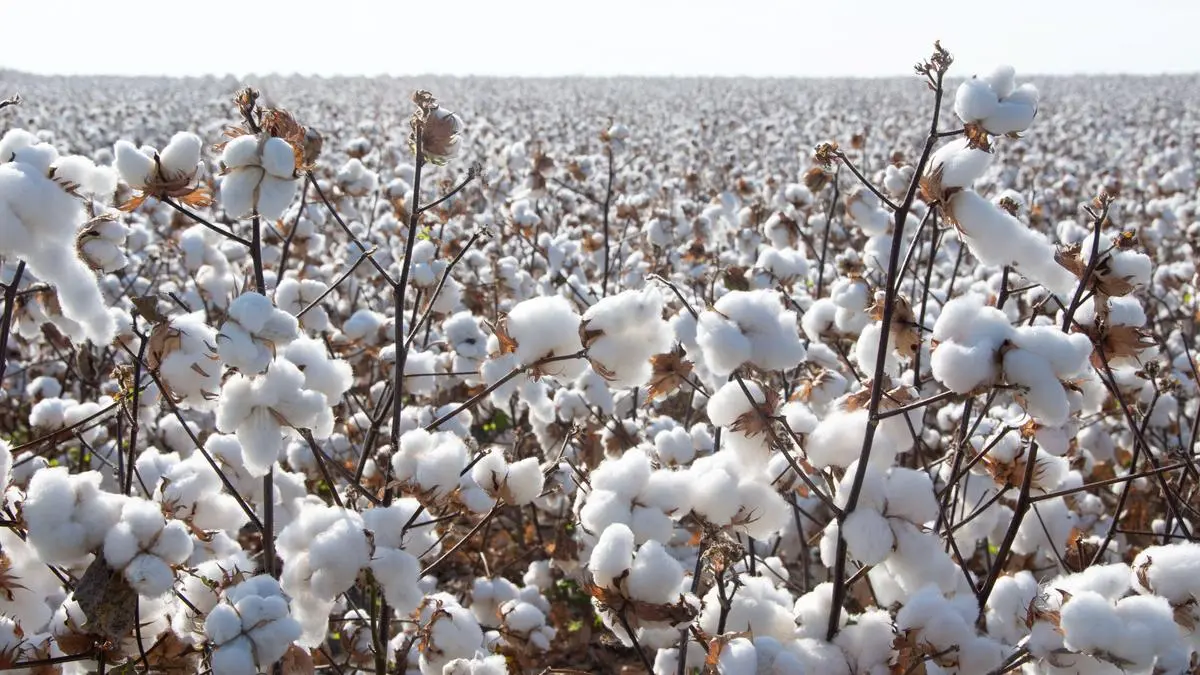
Cyclone Montha has hit cotton-growing regions of Telangana and Andhra Pradesh hard, submerging fields and damaging crops ready for harvest.
Cyclone Montha has dampened the hopes of cotton farmers in Telangana and Andhra Pradesh as heavy rains lashed several cotton-growing districts. Paddy, soya, and maize crops also suffered heavy losses due to the rains.
Cyclonic rains added to the woes of Telangana cotton farmers, who already faced the challenge of excessive moisture in the produce because of untimely rains in August and September.
“These rains have caused harm to both the crops where ‘picking’ has not started yet and the cotton that is ready for sale. We are now worried if the weather conditions lead to discolouring of the produce,” a farmer from Warangal told businessline.
Moisture levels threaten MSP sales
Preliminary estimates pegged total losses at 1.81 lakh hectares, including 61,000 hectares in cotton and 1.14 lakh hectares in paddy in Telangana. In Andhra Pradesh, the cyclone is estimated to have caused losses of Rs 820 crore.
Farmers are worried that very high moisture levels could force them to sell cotton at a price well below the minimum support price. The Cotton Corporation of India (CCI) insists that cotton moisture levels should be in the range of 8-12 per cent for them to buy the produce.
Changed scenario
Farmers expect that excess rains have resulted in quality and yield issues in some areas, such as Yadgir, Jewargi, and Shahpur in Karnataka, while the crop is good in areas around Raichur, said Ramanuj Das Boob, a sourcing agent in Raichur.
“As such, we were expecting more yield and an overall improved crop in Karnataka. Now with the rains, the scenarios have changed. Yet to ascertain exact damages, possibly a clearer picture will emerge only once the climate clears,” he said.
Arrivals drop across India as harvest stalls
Further, he said the unseasonal rains had delayed harvests, resulting in slower cotton arrivals across India and creating uncertainty in the market as the 2025-26 season begins. Traders and mills are reporting lower arrivals and mixed quality, while prices remain steady amid tight supply expectations.
“Normally, by late October or early November, cotton arrivals pick up pace across key growing states such as Maharashtra, Gujarat, and Telangana. However, continuous rain in several regions has delayed picking and affected fibre quality. Industry estimates suggest that current daily arrivals are around 70,000–90,000 bales — lower than normal for this period,” Das said.
In parts of Maharashtra and Gujarat, Telangana farmers report moisture-related issues and partial crop damage of 10-15%. Ginning factories say a significant portion of the early arrivals show higher moisture and contamination levels, making it difficult for mills to buy in bulk. The quality concerns are also leading to selective buying by spinners, Das added.
Published on October 31, 2025
